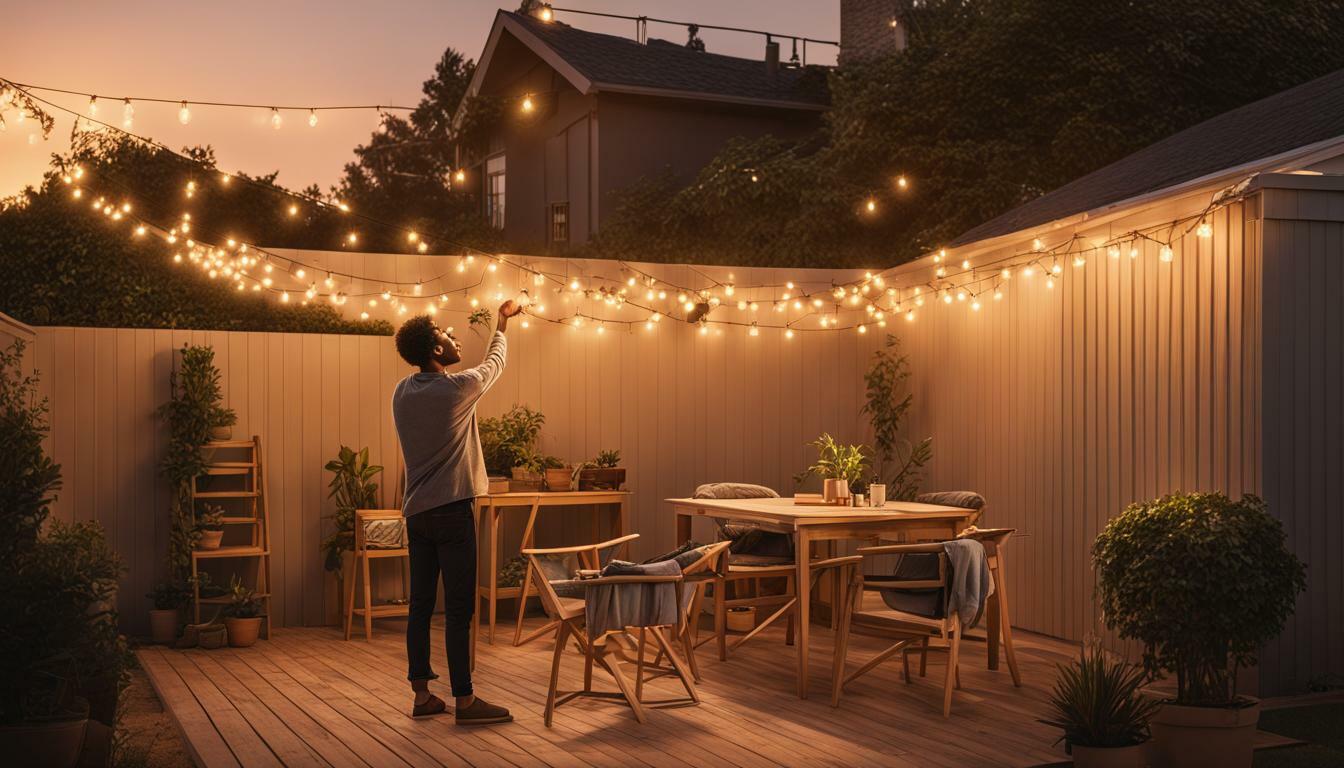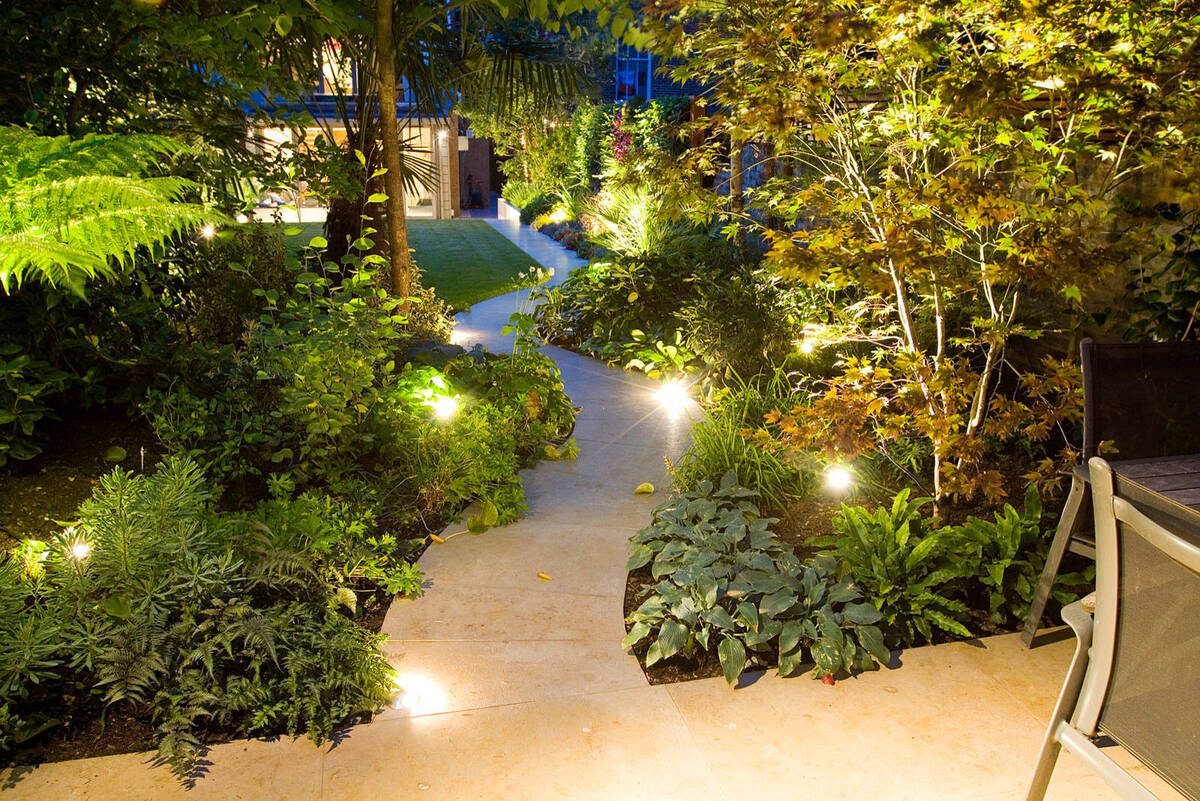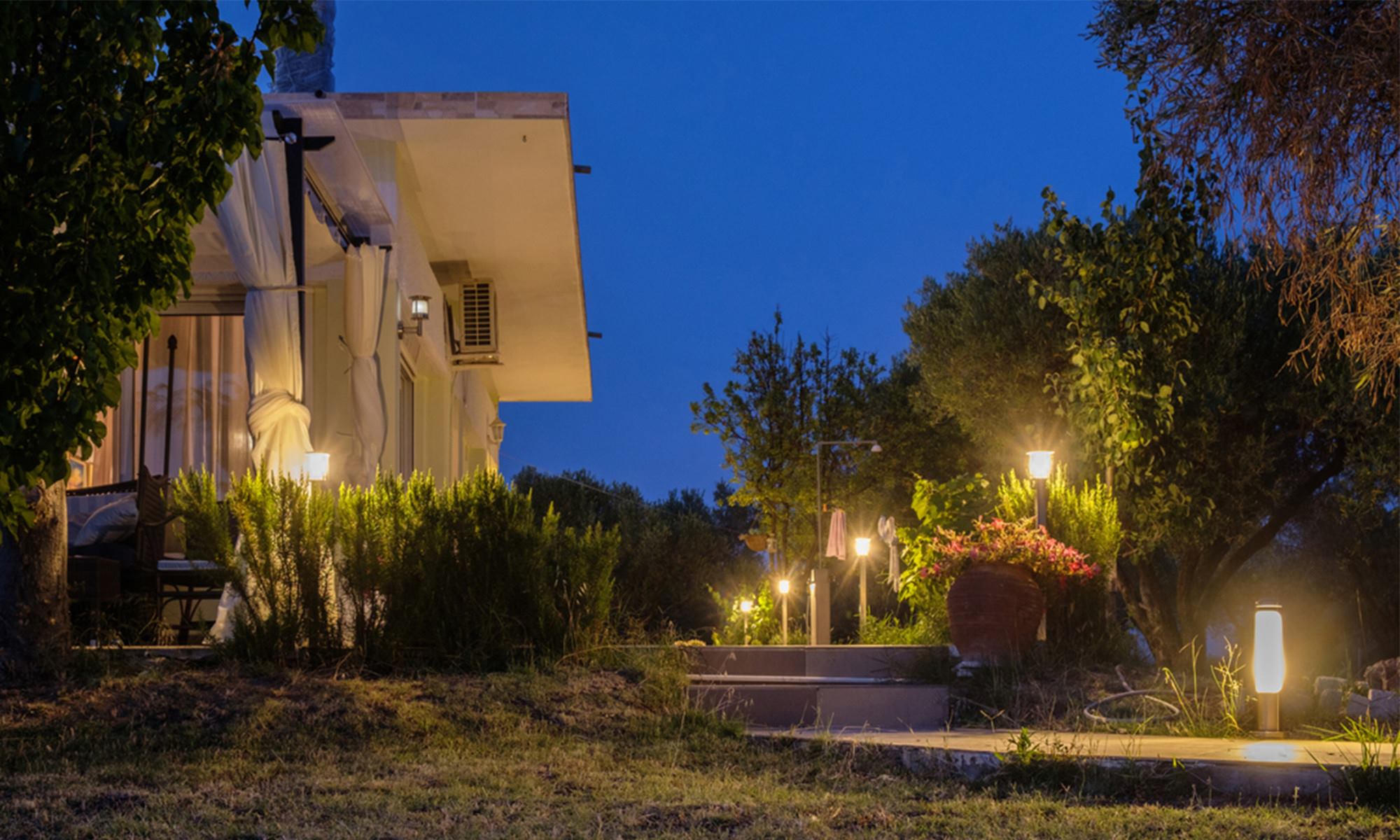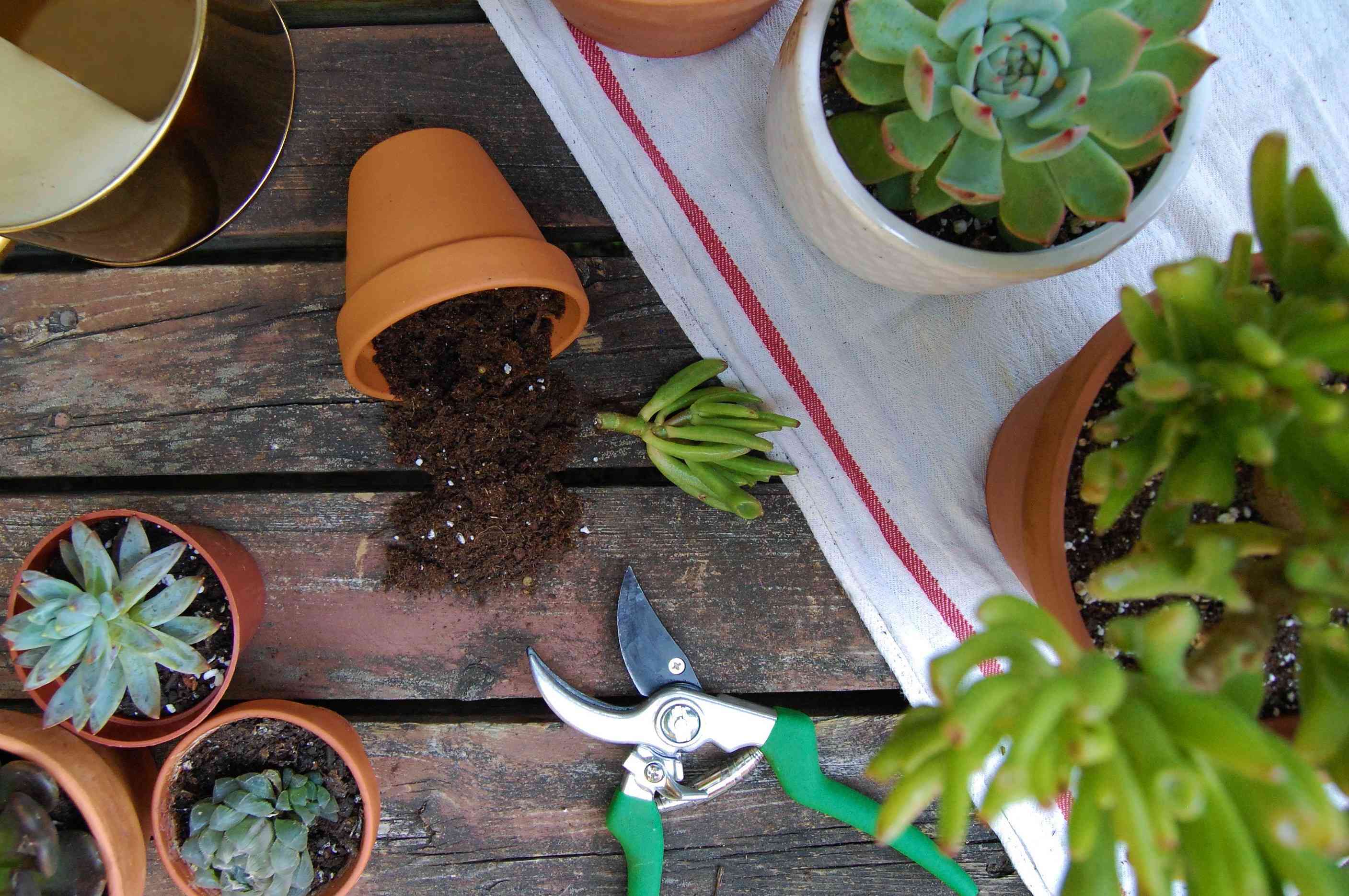Home>Gardening Techniques>DIY Projects>How To Hang String Lights In Backyard Without Trees


DIY Projects
How To Hang String Lights In Backyard Without Trees
Published: November 1, 2023
Discover creative DIY projects to hang string lights in your backyard without trees. Illuminate your outdoor space and create a cozy atmosphere with these ingenious ideas.
(Many of the links in this article redirect to a specific reviewed product. Your purchase of these products through affiliate links helps to generate commission for Chicagolandgardening.com, at no extra cost. Learn more)
Table of Contents
- Introduction
- Option 1: Using Poles or Posts
- Option 2: Attaching to Structures
- Option 3: Creating a DIY Freestanding Structure
- Option 4: Hanging from a Pergola or Gazebo
- Option 5: Using Ground Stakes or Anchors
- Option 6: Utilizing Fence Posts or Boundaries
- Option 7: Installing a String Light Suspension Kit
- Conclusion
Introduction
Enhancing your backyard with string lights can create a magical and enchanting ambiance for outdoor gatherings and relaxation. Whether it’s for a festive occasion or simply to add some cozy lighting to your space, hanging string lights in your backyard can transform it into a charming oasis.
However, if you don’t have any trees in your backyard, you might be wondering how to hang those beautiful string lights. Don’t worry! There are several creative and practical options you can consider to bring your string light dreams to life.
In this article, we will explore some DIY methods and techniques for hanging string lights in your backyard without relying on trees. From using poles or posts, to attaching them to structures or creating a DIY freestanding structure, we’ve got you covered with various options to suit your specific needs and preferences.
So, let’s dive in and discover how you can illuminate your backyard with stunning string lights, creating a warm and inviting outdoor space to enjoy all year round.
Option 1: Using Poles or Posts
One of the simplest and most versatile options for hanging string lights in your backyard is by using poles or posts. This method allows you to create a customized lighting setup without the need for trees.
To get started, you will need sturdy poles or posts that are tall enough to elevate the string lights to your desired height. You can use materials such as metal pipes, wooden posts, or even PVC pipes, depending on your budget and preference.
First, determine the layout and spacing of the poles or posts. Consider the size of your backyard and the desired illumination area. Mark the locations where you plan to install the poles or posts and ensure they are evenly spaced.
Next, dig holes for each pole or post using a post hole digger. The depth of the hole will depend on the height and thickness of your poles or posts. It’s important to ensure that the holes are deep enough to provide stability and withstand wind or other weather conditions.
Once the holes are dug, insert the poles or posts into the holes and secure them with concrete or gravel. Make sure they are straight and level, using a level tool for accuracy.
After the poles or posts are securely in place, you can now attach the string lights. Wrap the lights around the poles or posts, starting from the bottom and working your way up to the top. Use zip ties or hooks to secure the lights to the poles or posts, ensuring they are evenly distributed.
Finally, connect the string lights to a power source. Depending on your preference, you can use an outdoor extension cord or install a dedicated outdoor electrical outlet for a seamless and safe lighting setup.
This method allows you to easily adjust the height and positioning of the string lights, giving you the flexibility to create the perfect ambiance for your backyard. Plus, you can easily remove or rearrange the lights whenever needed.
Option 1 provides a straightforward and practical solution for those without trees in their backyard. It offers versatility and allows you to customize your lighting arrangement to suit your specific preferences.
Option 2: Attaching to Structures
If you have structures in your backyard, such as a pergola, gazebo, deck, or even a fence, you can take advantage of these to hang your string lights. Attaching the lights to existing structures can create a stunning and seamless lighting display.
First, identify the structures that are suitable for hanging string lights. Check if they are structurally sound and capable of supporting the weight of the lights. It’s important to follow any manufacturer’s guidelines or specifications to ensure safety.
Once you have determined the structures, you will need to gather the necessary tools and materials. Common options for attaching the lights include hooks, clips, or adhesive hooks designed for outdoor use. Ensure that these attachments are sturdy and weather-resistant to withstand outdoor conditions.
Before attaching the lights, plan the layout and design of your string light display. Consider the shape and size of the structure and visualize how the lights will be distributed. You can create straight lines, zigzags, or even weave the lights through the beams or posts for added creativity.
Start by attaching the hooks or clips to the structure, spacing them according to your desired lighting arrangement. Make sure they are secure and able to hold the weight of the lights. If you are using adhesive hooks, clean the surface of the structure before applying them and ensure they have sufficient adhesive strength.
Next, carefully hang the string lights on the hooks or clips, making sure they are evenly spaced and taut. Take your time to achieve the desired look and adjust the positioning as necessary. You can use additional hooks or clips to create curves or angles to add visual interest to your lighting display.
Finally, connect the string lights to a power source. Depending on the location and distance from the power source, you may need an outdoor extension cord or a surge protector specifically designed for outdoor use.
Attaching string lights to existing structures can be a convenient and visually appealing option. It not only adds illumination but also enhances the aesthetic appeal of your backyard. Whether it’s a cozy ambiance for a small gathering or a dazzling display for a special event, this method allows you to create a captivating lighting arrangement with ease.
Option 3: Creating a DIY Freestanding Structure
If you’re looking for a more hands-on approach and want to create a unique focal point in your backyard, building a DIY freestanding structure to hang your string lights can be a rewarding project. This option allows you to customize the design and size of the structure to perfectly fit your space.
First, determine the location and size of the freestanding structure. Consider the area in your backyard where you want to hang the lights and measure the space available. You can choose to create a pergola, a trellis, or a wooden frame depending on your preference and skill level.
Next, gather the necessary materials for building the structure. This may include lumber, screws, brackets, and a drill. Ensure the materials are weather-resistant and durable, as they will be exposed to outdoor elements.
Once you have the materials, follow a DIY plan or design your own structure. Start by building the main frame or support posts, ensuring they are securely anchored to the ground. Then, attach crossbeams or additional support beams to create a stable framework for hanging the string lights.
Once the structure is built, carefully hang the string lights along the beams or crossbars. You can use zip ties or hooks to secure the lights, ensuring they are evenly spaced and not tangled. Take your time to achieve the desired look and adjust the positioning as necessary to create a visually appealing lighting display.
After the lights are hung, you can add finishing touches to the freestanding structure, such as staining or painting the wood to match your backyard aesthetic. Additionally, you can incorporate climbing plants or decorations to further enhance the beauty of the structure.
Finally, connect the string lights to a power source. Depending on the distance from the power source, you may need an outdoor extension cord or consider installing a dedicated outdoor electrical outlet nearby for a more seamless setup.
Creating a DIY freestanding structure not only allows you to hang string lights, but it also adds a unique and personalized touch to your backyard. This option gives you the freedom to design and build a structure that complements your outdoor space while providing a stunning platform for your string lights to shine.
Option 4: Hanging from a Pergola or Gazebo
If you are fortunate enough to have a pergola or gazebo in your backyard, you can easily hang string lights from the structure to create a delightful and charming atmosphere. These structures provide sturdy supports and a built-in framework, making it a perfect option for hanging your lights.
First, assess the design and structure of your pergola or gazebo to determine the best way to hang the string lights. Look for sturdy beams or rafters that can support the weight of the lights and ensure they are structurally sound.
Next, plan the layout and positioning of your string lights. Consider the shape and size of your structure and envision how the lights will drape and illuminate the area. You can create straight lines, crisscross patterns, or even create a canopy effect with multiple layers of lights.
Once you have a plan in mind, gather the necessary materials for hanging the lights. This may include hooks, clips, or zip ties that are suitable for outdoor use and can securely attach to the beams or rafters of your pergola or gazebo.
Start by attaching the hooks, clips, or zip ties to the beams or rafters. Ensure they are firmly secured and evenly spaced along the desired lighting path. If you have a pergola or gazebo with a lattice or slatted roof, you can weave the lights through the openings for a whimsical effect.
Once the attachments are in place, carefully hang the string lights along the hooks, clips, or zip ties. Make sure the lights are evenly distributed and taut, taking your time to achieve the desired look. Adjust the positioning as necessary to create a visually pleasing display.
Finally, connect the string lights to a power source. Depending on the distance from the power source, you may need an outdoor extension cord or consider installing a dedicated outdoor electrical outlet near the structure for easier access.
Hanging string lights from a pergola or gazebo adds instant charm and elegance to your backyard. The structure provides a natural framework, and the lights enhance its beauty, creating a cozy and inviting atmosphere for entertaining or relaxing outdoors.
Option 5: Using Ground Stakes or Anchors
If you don’t have trees or existing structures in your backyard, another option for hanging string lights is to use ground stakes or anchors. This method is particularly useful if you have an open space or a large lawn area where you want to create a festive lighting arrangement.
To start, gather the necessary materials for this option. You will need ground stakes or anchors specifically designed for outdoor use. These are typically made of metal or durable plastic and come in various sizes and shapes.
Determine the layout and spacing of the string lights. Measure the area where you want to install the stakes or anchors and decide on the spacing between each one. This will depend on your preference and the desired lighting pattern.
Once you have your plan in place, use a mallet or a hammer to drive the stakes or anchors into the ground. Ensure they are securely inserted and able to withstand wind or other outdoor elements. If the ground is particularly hard, you may need to use a pre-drilled hole or water the area to loosen the soil.
Once the stakes or anchors are in place, attach the string lights to them. Most ground stakes or anchors have hooks or clips designed to hold the lights. Carefully hang the lights, making sure they are evenly spaced and taut.
For added stability, you can consider using guy ropes or tension wires to anchor the lights to nearby structures or weights. This can help prevent swaying or sagging of the lights, especially in windy conditions.
Finally, connect the string lights to a power source. Depending on the location and distance from the power source, you may need an outdoor extension cord or consider installing a dedicated outdoor electrical outlet nearby.
Using ground stakes or anchors is a practical and versatile option for hanging string lights in open spaces or large lawns. It allows you to create a customized lighting display that can be easily adjusted or moved as needed. This method is ideal for outdoor parties, events, or creating a magical atmosphere for special occasions.
Option 6: Utilizing Fence Posts or Boundaries
If you have a fence surrounding your backyard or any other form of boundary, you can take advantage of it to hang your string lights. Using fence posts or boundaries to support the lights can create a cozy and intimate atmosphere in your outdoor space.
First, assess the condition and strength of your fence or boundary. Check if the posts are sturdy enough to hold the weight of the lights and ensure that the structure is in good condition. Replace any damaged or weakened posts before proceeding.
Next, decide on the layout and positioning of your string lights. Consider the height and spacing you want to achieve, and visualize how the lights will drape along the fence or boundary. You can create straight lines, zigzags, or even follow the shape of the fence for a whimsical effect.
Once you have your plan in place, gather the necessary attachment materials such as hooks, clips, or zip ties that are suitable for outdoor use. Make sure these attachments are sturdy and weather-resistant to withstand outdoor conditions.
Start by attaching the hooks, clips, or zip ties to the fence posts or the boundary. Space them evenly along the desired lighting path. If your fence has slats or openings, you can weave the lights through them to create a charming display.
Once the attachments are in place, carefully hang the string lights along the hooks, clips, or zip ties. Make sure they are evenly distributed and taut. Adjust the positioning as necessary to achieve the desired look and ensure the lights do not sag or tangle.
Finally, connect the string lights to a power source. Depending on the distance from the power source, you may need an outdoor extension cord or consider installing a dedicated outdoor electrical outlet near the fence or boundary.
Utilizing fence posts or boundaries to hang string lights is a practical and visually appealing option. It allows you to take advantage of existing structures in your backyard while creating an enchanting atmosphere. Whether you have a wooden fence, a chain-link fence, or any other type of boundary, this method offers versatility and convenience in illuminating your outdoor space.
Option 7: Installing a String Light Suspension Kit
For a hassle-free and professional-looking installation, you may want to consider using a string light suspension kit. This option provides a comprehensive solution for hanging string lights without the need for trees or existing structures.
A string light suspension kit typically includes all the necessary components, such as cables, hardware, and hooks, to create a secure and visually appealing lighting display. These kits are designed for outdoor use and offer a convenient and efficient way to hang your string lights.
To begin, determine the layout and positioning of your string lights. Measure the space where you want to install the lights and decide on the desired height and spacing.
Next, follow the instructions provided with the suspension kit to install the cables or wires. Typically, this involves attaching the cables to secure anchor points, such as the exterior walls of your home or posts specifically designed for this purpose.
Once the cables are in place, use the included hooks or clips to hang the string lights onto the cables. Make sure the lights are evenly spaced and taut, adjusting the positioning as necessary to achieve the desired look.
After hanging the lights, connect them to a power source. Depending on the distance from the power source, you may need an outdoor extension cord or consider installing a dedicated outdoor electrical outlet or transformer for a seamless and safe electrical connection.
The advantage of using a string light suspension kit is that it provides a professional and polished look to your backyard lighting. It offers convenience and ease of installation while ensuring that the lights are securely and evenly hung.
Moreover, with a suspension kit, you also have the flexibility to easily adjust the height and tension of the cables, allowing you to modify the lighting arrangement based on your preferences or different occasions.
Installing a string light suspension kit is a great option for those seeking a simple and elegant solution to hang string lights in their backyard. It provides a professional and organized look while offering flexibility and ease of use.
Conclusion
Transforming your backyard into a magical and inviting space with string lights is easier than you might think, even if you don’t have any trees to hang them from. By exploring the various options available, such as using poles or posts, attaching to structures, creating a DIY freestanding structure, hanging from a pergola or gazebo, using ground stakes or anchors, utilizing fence posts or boundaries, or installing a string light suspension kit, you can bring your string light dreams to life.
Each option offers its own advantages and allows you to create a customized lighting display that suits your backyard and personal style. Whether you prefer a simple and budget-friendly solution or you’re up for a DIY project, there’s a method that will work for you.
Remember to consider factors such as the size of your backyard, the desired lighting patterns, and the availability of power sources when choosing the best option for you. Additionally, always prioritize safety by ensuring that any structures used for hanging lights are secure and capable of supporting the weight.
With a little creativity and some DIY know-how, you can create a stunning and inviting outdoor space that will be perfect for entertaining, relaxing, or simply enjoying the beauty of the illuminated surroundings.
So, go ahead and start planning your backyard string light setup. Let your imagination run wild and create an enchanting escape right in your own backyard.









